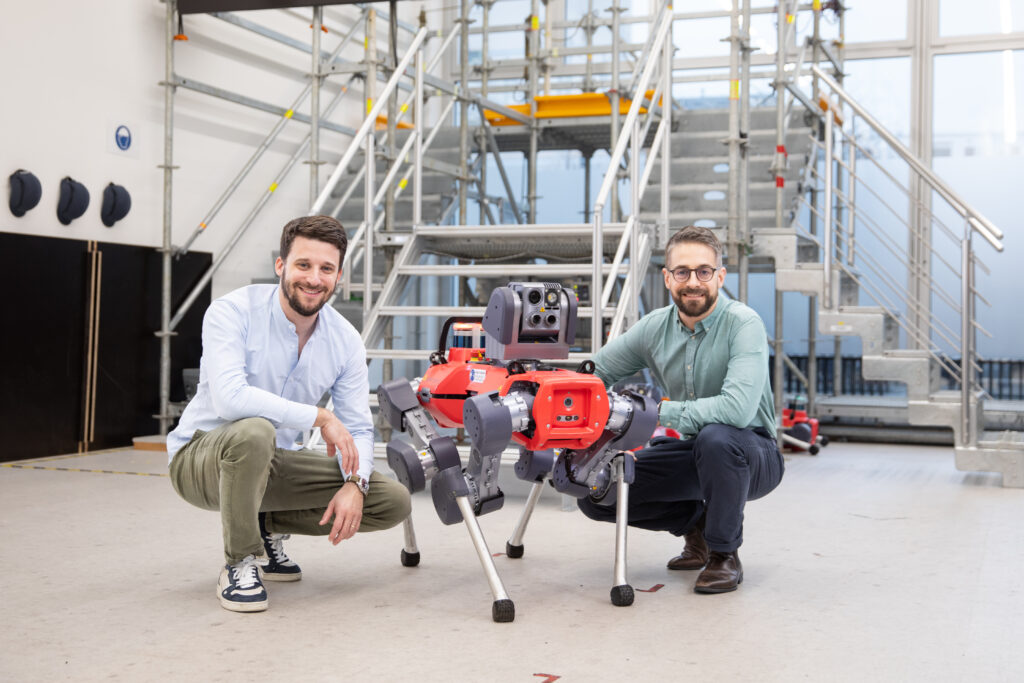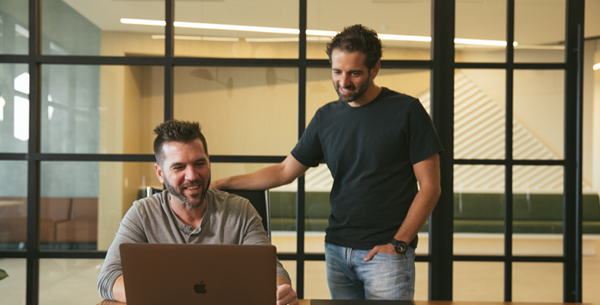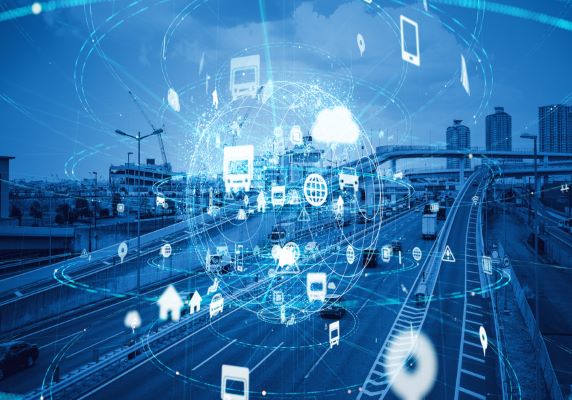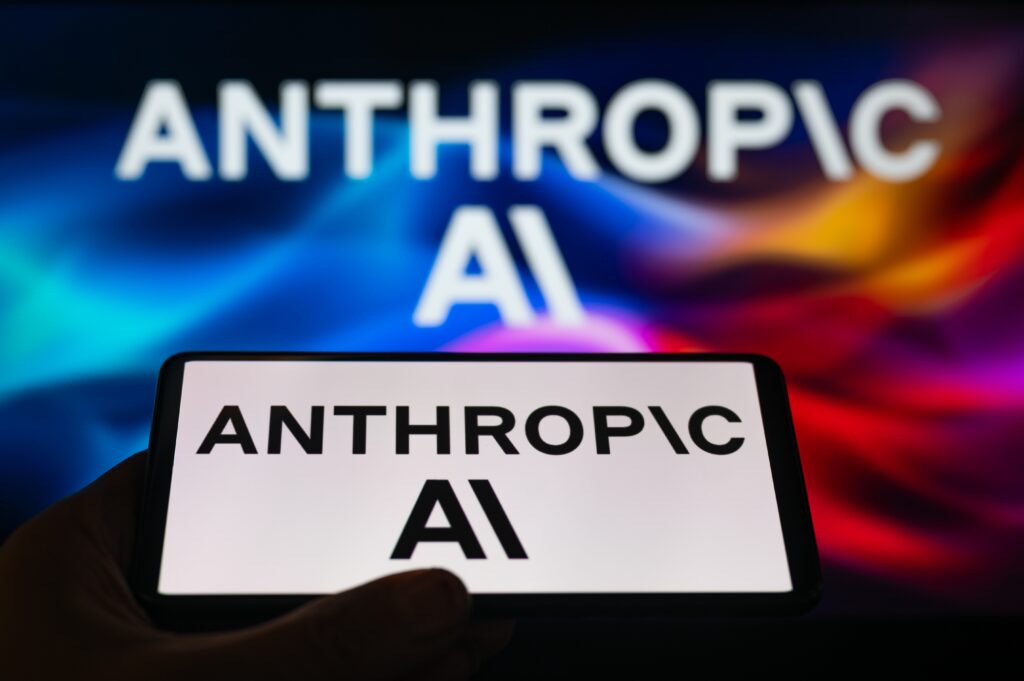
As consumers, we’ve come to expect a very high level of transparency and reliability in our shopping and our shipping. When we click to purchase, we count on our goods to arrive quickly, and we know we can track their progress every step along the way as they leave the warehouse, traverse the country, and eventually get dropped at our door. But when it comes to time-critical, high-value shipments — items like organs for transplant and aircraft parts that prevent flight disruptions for thousands of travelers — there has never been a similar level of reliability and transparency.
Nick Bulcao and Ryan Rusnak built Airspace to change that. Bulcao, Airspace’s co-founder and CEO, has years of experience in the logistics space and knew he could build something better for time-critical shipments. Rusnak, co-founder and CTO, is a seasoned software engineer who is driven to solve problems that make a real difference in people’s lives. With its patented technology, Airspace is a modern logistics company that uses artificial intelligence (AI) and machine learning to find the best and fastest delivery routes — and, for the first time, makes the complex, high-stakes, time-critical shipping experience as simple, reliable, and transparent as we count on as consumers.
We recently spoke to Bulcao and Rusnak about the hard work of solving complicated problems, the critical importance of building a great team, and the value of making a difference in the world — for example, as the logistics provider that’s helping transport California’s COVID-19 tests.

Ryan Rusnak, Airspace CTO and Co-Founder (left), and Nick Bulcao, CEO and Co-Founder (right), collaborate at the Airspace headquarters in Carlsbad, CA
Let’s start with the problems you set out to solve. What led you to start Airspace and focus on the critical shipments market? What is your vision for Airspace?
Nick Bulcao: I’ve been in logistics for the past 13 years. I started with a courier company here in San Diego, which I grew from the ground up, and which then enabled me to start or purchase several other logistics companies. What led to Airspace was a company I purchased in Phoenix, called First Delivery, back in 2014.
What First Delivery did, and still does, is act as an agent, or a courier company for large national freight-forwarding companies that specialize in this time-critical space. By the middle of 2015, I quickly realized there was no technology or transparency in a space that desperately needed and wanted it. When you are shipping life-saving human organs or COVID-19 vaccines, transparency on routes and delivery times becomes critical. And that’s what motivated me to start Airspace.
I’m not the technical co-founder. My first hire was Ryan. And he and I got in a conference room and discussed everything that was wrong with the industry, based on my experience, and based on impeccable records kept by the gentleman I purchased First Delivery from on the company’s service failures over the past 20 years. I had this immense amount of data to give to Ryan, saying, “Here’s all the problems in the industry. Now go build tech around it.” And that’s exactly what he did.
How did you meet? What made you decide to work together?
Ryan Rusnak: My background is in software. I was writing software in the federal space, pretty much throughout my 20s. I wrote a lot of things that I was proud of, like the app that creates the federal budget. I did some early machine learning work with the National Institutes of Health. But eventually I needed to get out of government work. There’s so much red tape, I couldn’t be the best version of me.
So I put my resume up online, and I said, “I only want to go to Southern California.” My thinking was, Virginia is too hot in the summer and too cold in the winter. First I put my resume on Monster, but there were just so many programming jobs. I realized I need something hyperlocal, So I put my resume on Craigslist. And that’s how Nick and I met. He had the greatest jumping off point ever to start a startup, with this great problem to solve and all this historical data to help do it. And the best part is it’s meaningful work. We’re not targeting ads, or maximizing clickability on Facebook. We’re literally saving lives. And it feels really good to do that.
What sets Airspace apart from other companies in the space?
NB: I always use the example people are used to, and have been used to for many years, which is the Amazon approach. You’re able to order a pair of socks, and you’re able to track that pair of socks from the time you placed the order all the way until it gets on your doorstep. And with time-critical shipments, this just hasn’t and still doesn’t exist outside of Airspace.
RR: We are solving a problem that is exponentially harder than just using a site like Kayak to plan your trip, solving for how you get from Point A to Point B. If you’re trying to get an organ from an arbitrary place in the San Francisco area to an arbitrary place in the Boston area, it could fly out of any three airports, could land in any three airports, could connect in any number of airports in the middle, and could fly on any number of airlines.
There’s actually more than 180 million ways to route the shipment. You have to figure out which way is best for an organ, which isn’t going to be the best way for a pallet of batteries, which isn’t going to be the best way for an airplane part. You have to be able to find the most risk-free and optimal path for that specific commodity, in real-time, when planes are constantly taking off. So it’s an extremely difficult problem to solve. And that’s the main reason it didn’t exist.
The big difference with Airspace is we can create the most optimal path possible for a shipment in less than a second, using the patented technology we’ve been developing.
NB: And our problem is even more difficult because we aren’t starting at an airport. We are starting at an arbitrary place on the globe, like a lab or a warehouse or a hospital. Then we have to figure out travel time, figure out the optimal flight, and then do the same traffic travel problem to the final destination. And then you need to find a driver in the area that can get to the pickup place, park, complete the pickup, and drive to the airport. If you happen to choose a route that doesn’t give them enough time, you just set the shipment up for failure. Create a route with too much padding in it, and you risk losing the flight that gets the package there same-day. This is the extremely difficult optimization challenge that literally only Airspace can solve today by leveraging our patented logistical management software, along with machine learning and artificial intelligence tools.
Meanwhile, planes are literally taking off as our competitors are using humans to research flights and routes. That’s simply too slow for time-critical shipments.
Tell us about the technology you built.
NB: We’ve built an industry-first, automated solution that leverages machine learning and artificial intelligence so that we can provide quoting, routing, and real-time notifications to our customers. Our platform creates the optimal shipping route within seconds, then automatically finds an experienced driver to dispatch, then navigates the driver, generates the air waybill, verifies takeoff and landing, automatically dispatches a driver for recovery, collects a digital proof of delivery, and displays all these notifications to the appropriate stakeholders in real-time, creating never-before-seen transparency for time-critical shipments.
How does AI and machine learning fit in?
RR: To get on the nerdy side, I’ll talk about routing. Our platform uses what’s called a wide and deep neural network. I’ll start with the wide part. You can think of that as rule memorization. If we’re transporting an organ, for example, don’t put it on a connecting flight. Things like that.
But the deep part lets us do stuff that’s really, really cool. Hypothetically, let’s say we have a new client that moves COVID vaccines from Seattle to New Mexico. Well, we’ve never done that before. So the router doesn’t know how to do that. Machine learning is all about pattern recognition, and it’s never seen that before. The deep side of the neural network, the part that’s really considered AI, says, “We moved other stuff on that route, from Seattle to New Mexico. And we moved COVID vaccines elsewhere. So how can we blend those things together, and figure out the optimal path for something on a route that it’s never seen before, for a commodity that’s never traveled that path?” That is true AI at scale. And it would not be possible to write without AI. We literally can’t solve the problem without it.
I could talk about that at multiple parts of the supply chain. We use AI to find the optimal driver, for example. We use AI to figure out how long it will take a driver to do a pickup, because we don’t know that at the time of the order. Maybe Nick has been to that hospital 20 times. I’m sitting in the parking lot, but I’ve only been there once. Even if Nick is farther away, we’ll send Nick. Because he has a much lower risk profile for that job. So we use AI to minimize risk in all these little parts of the supply chain, and we end up with a much higher degree of success for the transaction.
Does today’s mobile ecosystem help you to provide point-to-point tracking in a way that the incumbents can’t?
NB: Mobile is critical to our real-time process. Our mobile app keeps our customers updated to the second on their critical shipments, no matter where they are in the world.
RR: When we started Airspace, the entire supply chain was a black box. So after a customer said, “Hey, come get this,” they didn’t know when the driver was going to show up, or when their shipment was going to arrive. A patient would be under anesthesia, and in some cases the patient would wake up having been cut open and not received the organ. Once you open that black box, there are all these opportunities for communication. The driver’s here. He tendered the package to the aircraft. The plane took off. It landed.
How will 5G improve that?
NB: With 5G, because it increases the speed and responsiveness of wireless networks and expands them to enable hundreds of thousands of connections, it offers greater capacity and reduces latency. That’s a big plus for Airspace, because we are tracking mission-critical packages in real time where every second counts. 5G also helps further mobile innovations, and we intend to continually enhance our mobile app capabilities as fast as wireless technology allows us to.
RR: The more we have a high degree of signal and communication with the driver, the more we know where everything is going to be. Right now, we’re fulfilling that the best we can with the best tech that exists. But with 5G, that’s a pervasive kind of coverage. If we can track something while it’s at rest at a warehouse, that’s got a 5G tower over it, en route, in the air, on the ground, all the way to the end, that’s nirvana.
You’ve also been involved in addressing the pandemic. How have you helped?
NB: The coronavirus pandemic further increased demand for reliable, expedited delivery of medical supplies, laboratory samples, ecommerce orders, and other critical supplies. Airspace jumped into the relief efforts quickly, delivering COVID-19 tests and critical PPE, and we are now a primary logistics provider in California helping with COVID-19 vaccine rollout. We’re moving thousands of COVID tests in California on a daily basis. It’s been an honor to come to the service of the country as we all work together to fight the pandemic and save lives.
Do you serve industries beyond healthcare?
NB: We serve more than 200 enterprise clients in the organ transportation, lab testing, medical devices, healthcare, high-tech and semiconductor, and aerospace industries. They’re all customers that rely on Airspace to deliver their time-critical shipments, including LabCorp, Frontier Airlines, Quest Diagnostics, and the American Red Cross.
We also partner with other shipping companies. We don’t see them as competitors. We can’t touch them when it comes to next-day shipments. But they know they can count on us for same-day, time-critical shipments, whether it’s a small parcel or a large parcel.
What are other big opportunities for Airspace? What’s the long-term vision?
NB: We see tremendous opportunities to grow domestically and internationally through our key verticals — healthcare, high-tech and semiconductor, and aerospace, but also in agriculture, automotive, manufacturing, construction, and energy. We are also expanding our heavyweight shipping that’s more than 100 pounds, and cold storage capabilities. We want to be able to make international shipping as easy as domestic. We want to expand our services in both charter and onboard courier services. And we want to build out our driver network.
RR: We also intend to continually improve our technology. Our proprietary logistical management system is unlike any other in the logistics industry today, and we will continue to expand on our differentiating technology by leveraging machine learning and AI to provide peace of mind to our customers with time-critical shipments.
What lessons have you learned in your previous roles that help you in today’s startup culture?
NB: I feel like everything I’ve done in the past has led me to what we’re doing now at Airspace. In terms of people management, in terms of juggling about 50 things at any given moment, all of the complexities that we deal with day in, day out. I know I’ve always come back to the advice to make sure you have the right people in the right place. So I’ve been very heavily involved in the recruiting aspect of our business. We now have more than 200 employees at Airspace, and I’ve interviewed the vast majority of them. I know how important the people are to the success of an organization.
RR: I’m from big organizations. The government, to Dell, to Deloitte. The one thing I’ve known in my career is that the smaller the company the better. Until it just was me and Nick. So I guess the lesson I learned is to maximize happiness.
Who has influenced you most as entrepreneurs and why?
NB: I think what’s been critical to me is having a bunch of mentors that I’ve been able to pick up the phone and call at any given time. I’m proud to be a part of the San Diego ecosystem of startup life, and try to give my time to mentor other early-stage founders.
I also point to the Steve Jobs approach, also about people, which is you don’t hire smart people and then tell them what to do. You hire smart people so they can tell you what to do. I believe that especially in my leadership team, but among my entire team. Ryan is a lot smarter at writing code than I am. I’m not going to try to tell him how to write code.
RR: What I always say, especially about starting Airspace, is when you’re starting something new, by definition you know the least amount about that problem. If we just jumped in and started to make stuff, just started writing code, I think we would have failed. We had to figure out what the problems were. And then, once we solved those problems, we went back and said, “OK, we’ve changed an industry — what’s the biggest problem now?” We’ve done that over and over and over. And I think that’s why we’ve had a lot of success.
Do you have a motto?
RR: We do look at each other regularly and say one thing to each other. It just cracks me up. Nick, go ahead.
NB: It’s Rule Number 76, no excuses.
RR: It’s from Wedding Crashers. “No excuses. Play like a champion.” No matter what, you’ve got to get stuff done.



